This post may contain affiliate links. If you make a purchase through a link, I may receive a small commission, at no cost to you. These commissions help keep this website up and running, and I thank you for your support. Read my full disclosure here.

I am not a medical professional. Talk to your doctor before making any changes to your diet.
For years I ignored my Irritable Bowel Syndrome (IBS) and various undiagnosable stomach troubles. I was afraid that it would mean that I would have to make significant changes to my diet, and being a passionate foodie this was just not something I was willing to entertain. I had tried various medications such as Buscopan (hyoscine butylbromide), Colofac (Mebeverine hydrochloride), Imodium (loperamide), and peppermint oil, but they have all had zero affect, or actually made it worse. But then my health got to a point where it was so bad, I was finally forced to do something about it.
After spending many hours researching answers to my troubles and trawling health website discussion forums, I discovered the vast number of people similarly struggling with a broad range of stomach issues that modern science had no easy answer to. My hunt led me to the extensive amount of research being undertaken into the gut bacteria, specifically prebiotics and probiotics and how it can affect not only our health, but also our mental well-being. Over the years I have also struggled with anxiety and depression, so these findings fascinated me.
After learning more about prebiotics and probiotics I began applying my new found knowledge to try and ease my health issues. Being honest with myself, I know that I will never be one of those people that can convert to a lifetime of strict diets, so I thought I would start by making the changes that required the least effort and impact on my everyday life.
There are three types of Irritable Bowel Syndrome (IBS), they include:
- IBS-C: IBS with constipation
- IBS-D: IBS with diarrhoea
- IBS-A now known as IBS-M: IBS with alternating constipation and diarrhoea, now referred to as mixed type IBS.
Know What Triggers Your IBS
In order to help me understand the connection between my mind, gut, nutrition and wellbeing, I used the Cara: Food, Mood, Poop Tracker App to record and track what foods I ate, when I was stressed, as well as my poop, tummy pain, mood, stress, menstrual cycle, and skin condition. I also recorded my activity such as exercise, sleep, pain and medications. For those of you that use Apple Health, it also integrates. Using an App like this is much easier than trying to keep your own diary because it shows you which factors have an influence on your symptoms and the link between your diet, symptoms and stress. There is even an in-app chat to ask questions and get help by Cara experts.
Food and drink triggers are very individual for each IBS sufferer. For example, although foods that are high in pre and probiotics can improve some people’s IBS, for others it can actually make it worse. I got a better understanding of what food I could consume without pain by using the FODMAP App. Developed by Monash University, FODMAP is an acronym that describes the short-chain carbohydrates that are poorly digested. Basically, the low FODMAP diet aims to remove poorly absorbed carbohydrates from the diet for a period of time and then reintroduces them to help you determine which foods trigger your symptoms. The App provides information about the diet and a searchable database for all the foods that have been tested and what serving sizes are acceptable. It even has recipes and an option to create a shopping list and symptom diary.
There are also a number of other things that can cause me to get a massive ball of gas in my tummy. They include chewing gum, which can make me take on excess air, wearing tight waisted clothing, and overeating. I have a serious problem with eating waaay more than I can comfortably eat. This then puts extra pressure on my stomach and I end up getting a really swollen, gassy, belly. which is made much worse if I’m wearing clothes with a tight waistband. Drinking alcohol with my meal can dull my senses and I often don’t realise that I’m full already before it’s too late. I also have the habit of eating my food way too fast. Now I try and slow down, take long pauses, and consider my serving sizes.
Diet
Research recommends that it’s best to gain your essential and beneficial nutrients directly from food rather than relying on supplements. So I decided to look at ways I could alter my diet, yet still continue to eat my favourite foods.
I read over the list of foods that contain prebiotics and probiotics to see what I could add to my diet, and so far these are the changes that I have made:
Alcohol and Sugars
From my own observations, I know that alcohol and sugar causes havoc with my gut, so I have made efforts to reduce my alcohol and sugar intake. However, at the end of the day I enjoy consuming them, so for me it’s all about balance. I just try to consume in moderation. FYI I don’t drink coffee (never liked the taste of it), so can’t comment on its affects, but know that it can have a negative affect for some people so you may want to try reducing your coffee intake.
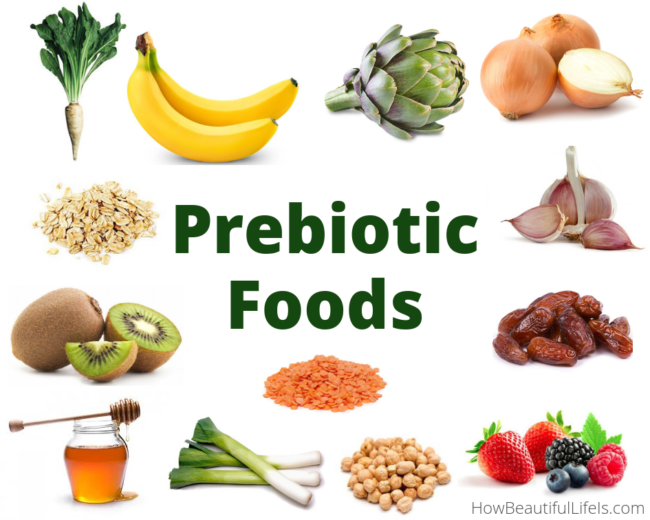
Onions and Garlic
I have always added onion and garlic as the base of pretty much every meal that I make, but I now buy those big bags of them so I always have some at hand. When I’m roasting any vegetables, I also throw in a whole bulb of garlic into the roasting dish. Garlic tastes amazing when roasted.
Leeks
Think chicken and leek pie, leek and potato soup and leek fritters. Try adding leeks to your favourites such as macaroni and cheese and quiches.
Beans and Chickpeas
I add cans of legumes to my meals such as chickpeas and kidney beans. I love that I can just stock up my cupboard with them so that I have on hand for whenever I need them.
Before adding them to your dish, make sure that you thoroughly drain and rinse them (don’t be put off by the smell when you open a can chickpeas, they honestly taste nothing like they smell). Legumes are great in a huge variety of dishes. Making a salad? Throw in a can of chickpeas. Making a curry? Throw in a can of chickpeas – this honestly makes curries so much better! I wish I had started doing this years ago. I also like to add kidney beans into boiled rice, my burrito mix…just get inventive!
Lentils
I usually use the red ones because they are quick and easy to cook with. Add them to the final 20 minutes cooking time of your stews, chilli, curry, burrito mince … the list goes on.
Oats, Dates, Honey and Berries
There has been a lot of research recently involving oats. Not only do they contain lots of vitamins, minerals, antioxidants and fibre, but they can also lower cholesterol, blood sugars and your risk of heart disease. For those IBS-C sufferers, you’ll be pleased to hear that it can also relieve constipation.
One of the most popular ways of eating oats is as porridge with a swirl of honey (a prebiotic). But I am probably only one of few people that don’t actually like porridge. In the morning I also like to get out of bed at the last minute, so I don’t want to spend time preparing breakfast. Instead, I came across an alternate oat breakfast recipe that I really enjoy. The night before I combine half a cup of oats with half a cup of milk in a bowl (you can add larger quantities if you like a bigger breakfast). You can use any kind of milk, but I prefer to use unsweetened almond milk in an attempt to reduce the large amount of dairy I consume. Into the oat milk mix I chop up a date or two to naturally sweeten it. Dates are are high in fibre, vitamins and minerals and can relieve both constipation and diarrhoea. Medjool Dates are my favourite as they are the most juicy and delicious (but consequently, also the most expensive). Additionally, you could also add a bit of honey or some berries, nuts and seeds. I then pop it into the fridge to soak overnight – no cooking required!
For those mornings where I haven’t prepared anything and need a quick breakfast, I keep a box of fruit and fibre cereal in the cupboard so at least I’m getting something with fibre in it. On the weekends I enjoy oat granola with yoghurt and berries.
Yoghurt
When I was younger, I always thought that natural unsweetened yoghurt tasted horrible, but as I got older I actually now love it and eat vast amounts of it in both sweet and savoury dishes. My husband and I get through a 1 litre tub of it every fortnight. You can save a lot of money by making your own yoghurt using yoghurt starter and a yoghurt maker
For a delicious treat in the weekends, I add natural yoghurt to some granola and add a variety of berries with a dollop of honey. I also love adding spoonfuls of yoghurt on the side of my curries and pilaf dishes, its great to dip your naan breads into. I also use it in place of sour cream and on wraps in place of mayo. One of my favourite things to make is Greek tzatziki. It’s delicious on a variety of dishes or just on its own as a dip with some Greek flatbreads.
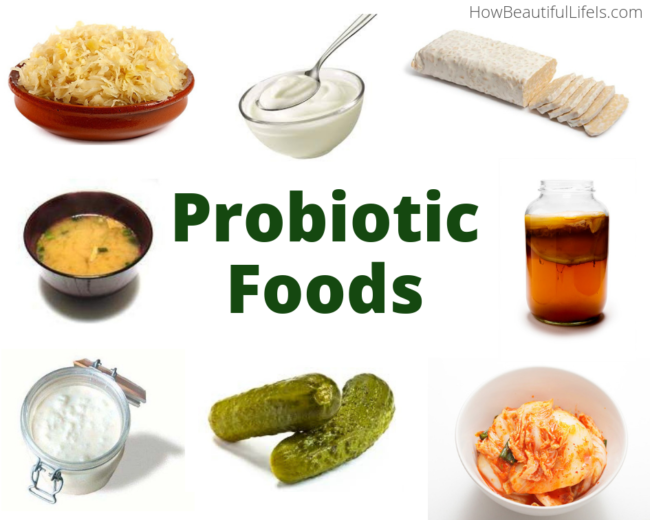
Kefir
The first experience I had with kefir was when my husband and I decided to grab some milk from the nearby Polish supermarket. When my husband went to pour the milk onto his morning cereal he thought it was curdled as it had a slightly lumpy texture. However, when I smelt it it seemed fine and it didn’t quite look like spoiled milk. A quick google search revealed that it was in fact kefir. Similar to yogurt, this fermented dairy product is a unique combination of goat or cow’s milk and fermented kefir grains. It’s very popular in Eastern and Northern Europe and has a tart but refreshing flavour that’s a little strange tasting at first. I liken it to drinking a kind of unsweetened natural yoghurt. In the end I strained the kefir overnight using a muslin cloth and made kefir cream cheese which was delicious.
Fast forward a year, during my research on stomach health I discovered that kefir contains about 30 strains of beneficial yeast and is a very rich source of friendly probiotic bacteria, vitamins and minerals. As well as restoring the balance of friendly bacteria in the gut, it’s also highly effective for many forms of diarrhea and ulcers caused by H. pylori infection. If you are only going to make one change to your diet, then make it kefir as it is a much more powerful probiotic than yoghurt.
Kefir is made from gelatinous white or yellow particles called “grains.” These grains contain the bacteria/yeast mixture clumped together with casein (milk proteins) and complex sugars. The grains ferment the milk, incorporating their friendly organisms to create the cultured product. The grains are then removed with a strainer before consuming and added to a new batch of milk. Modern versions of kefir can be made vegan friendly using water, soy milk, rice milk, coconut milk, coconut water etc.. and is tolerated by those that are lactose intolerant.
As kefir becomes more popular it is becoming more readily available as a ready to drink milk from the supermarket. But if you can’t find it at your local supermarket, try finding a shop that sells Eastern or Northern European food. Alternatively, you can make it yourself using a kefir starter culture and a kefir fermenter kit.
As with everything, it’s best to introduce it into your diet slowly. I suggest 1/4 cup per day (every second day if you have a really sensitive stomach) and work your way up to one cup per day. Its important to take regular breaks in order to give your body a chance to build its own immunity, so aim to consume kefir no more than 5-6 days per week. If you don’t like drinking it as is, then use it to make a delicious smoothie! I have a small glass for breakfast Monday to Friday (I usually have natural yoghurt, berries and muesli on the weekends).
Tip
Make sure that you give the kefir a good shake before serving as it separates.
Supplements
If you have stomach problems like me, then even if you eat the foods containing prebiotics and probiotics, it can still be a real challenge to create a healthy gut environment and increase your levels of health bacteria. This is especially an issue when I am on holiday and can’t get access to my usual prebiotic and probiotic foods. So consider taking supplements alongside your diet changes.
I purchased some Bio Kult Probiotics and began regularly taking one each morning with breakfast and then one with dinner. It’s important to take these with food to help the bacteria survive the stomachs acid bath. I like that this supplement contains 14 strains of probiotics with a variety of both Lactobacillus and Bifidobacterum. Each capsule contains a minimum of 2 billion microorganisms. I had taken these probiotics off and on in the past, especially when my diarrhoea and stomach pains got out of control (it’s always hard for me to establish whether it is actually a stomach bug vs. my IBS-D getting worse).
A randomized placebo-controlled clinical trial of Bio Kult in the management of diarrhea-predominant irritable bowel syndrome¹ demonstrated that the multi-strain probiotic was associated with significant improvement in symptoms in patients with IBS-D and was well-tolerated. These results suggest that probiotics are beneficial in IBS-D patients.

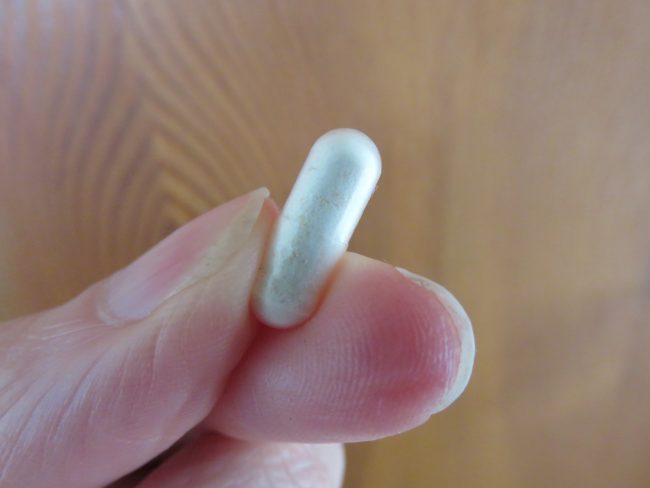
However, in my research I found that taking probiotics can be useless if you haven’t already got a good level of prebotics in your gut, which meant I was most likely not getting the most out of my probiotic supplements. So a few weeks later I started taking prebiotic supplements. I bought myself some inulin in the form of chicory root powder. However, I had read that some people, especially those with IBS, can actually experience discomfort, stomach upset, flatulence and even diarrhoea when taking prebiotic supplements, so I began very cautiously. The daily recommended intake is for 5-10 g or 1-2 teaspoons, so I started with just under half a teaspoon each evening diluted into a glass of water. The chicory powder is very fine and easily dissolves. Sometimes I sprinkle it into my dinner instead as its quite tasteless. After a week at this dose I honestly didn’t notice any side effects, so I increased it to a small teaspoon, again with no ill effects. This is the dose that I now regularly maintain. If you can’t tolerate inulin, then think about taking another form of prebiotic such as GOS sold by Bimuno. I have written a detailed post comparing Inulin and Bimuno to help you to decide which one is best for you.

Herbs
Peppermint oil helps a lot of IBS sufferers with bloating, and you can buy them in an easy to take peppermint oil capsule. Alongside peppermint, there are other herbs that also support IBS symptoms including liquorice root, basil and fennel. I take these as an herbal tea which I detail more in my post Herbal Tea Recipe That Aides IBS. In this post I include a detailed explanation of how these herbs help with IBS symptoms and provide the recipe for the sugar and caffeine free herbal tea. The bonus side effect is that it also curbs sugar cravings, which is also helpful in helping me to cut down on my sugar intake.
Outcomes
After several months of making these changes to my diet, I have experienced a significant reduction in my diarrhoea (and the number of my trips to the toilet) and general stomach pains. However, I’m not sure if it has reduced my episodes of ‘gas ball’ which is what I call it when I get a massive hard ball of gas form in my upper abdomen that causes sharp stabbing pains (common in IBS sufferers). This has always occurred sporadically to me and I’ve never been able to predict it or understand the conditions for the onset of an episode. I am aware that Cognitive Behavioural Therapy (CBT) can help, so may explore this in the future.
Another interesting outcome has been the effect on my mental health. Since I was young, I’ve suffered from anxiety and also periods of depression; however, the intensity seems to have reduced. There have been no other changes in my life that can explain this. I have continued to work in a very high stress management position in the social care sector, and there has been no change to my work or even in my personal life. Although there are still times where I can feel anxious or a bit down, overall, my mental health seems to have improved. I just hope that it continues.
Like everything, further research is still needed in this area. My experiences may not be the same as yours and my story here is in no way a robust clinical research trial. I simply wanted to share my journey with you and hopefully encourage and motivate you to try something new that might improve your health and wellbeing.
I would love to hear about your success and failures too! Please leave a comment below and share your experiences.
FAQ’s
Have you experienced an increase in flatulence?
Well, to be honest with my IBS I’ve always been a bit gassy anyway. I haven’t noticed an increase or a decrease. So short answer – no change.
Has it increased your diarrhoea?
No, in fact my diarrhoea has significantly decreased from an everyday occurrence to an occasional occurrence.
Has it reduced your gas bloating?
Unfortunately I don’t think I have experienced any changes to this problem. However, it’s hard for me to establish whether I’ve had any improvement because this has always happened to me sporadically. Sometimes it can happen when my anxiety increases, but sometimes it just happens when I’m relaxing at home, so this is still a matter for me to explore further. Drinking a cup of my homemade herbal tea can relieve it though.
Tip
I’ve found wearing tight pants with tight waist bands can cause some seriously painful gas bloating!
How often and how much do you take prebiotic and probiotic supplements?
I take a probiotic tablet with my breakfast and then at dinner. At dinner I also dissolve a small teaspoon of prebiotic inulin in a glass of water or into my meal. I can be forgetful, so sometimes I do don’t take either the prebiotic or probiotic. But I don’t freak out, I just take the usual dose the next time its due.
What will happen if I stop taking prebiotics and probiotics?
If you stop consuming prebiotic and probiotics then they will stop multiplying and die off, and that’s when the bad bacteria take over. You need to think of it as a lifestyle change and be prepared to maintain it.
References
¹Ishaque, S. M., Khosruzzaman, S. M., Ahmed, D. S., & Sah, M. P. (2018). A randomized placebo-controlled clinical trial of a multi-strain probiotic formulation (Bio-Kult®) in the management of diarrhea-predominant irritable bowel syndrome. BMC gastroenterology, 18(1), 71. https://doi.org/10.1186/s12876-018-0788-9

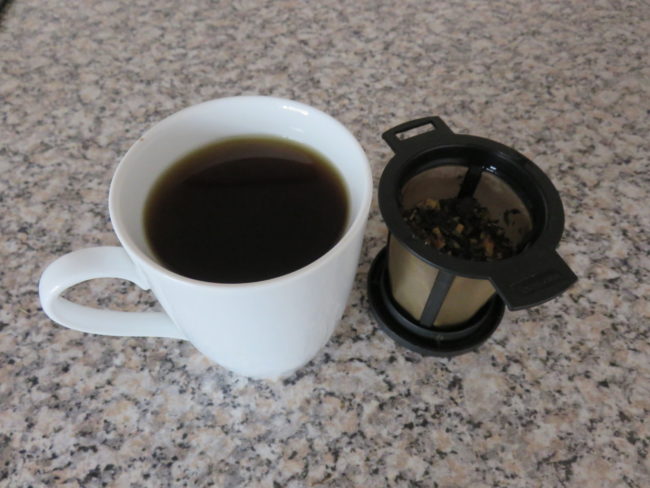


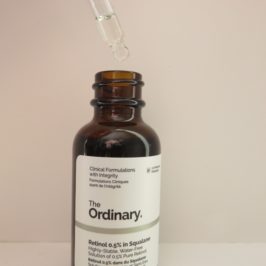




Leave a Reply